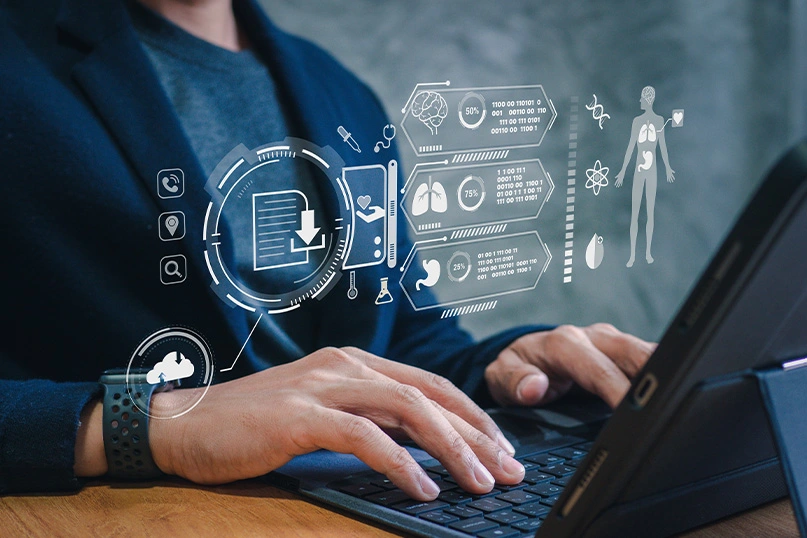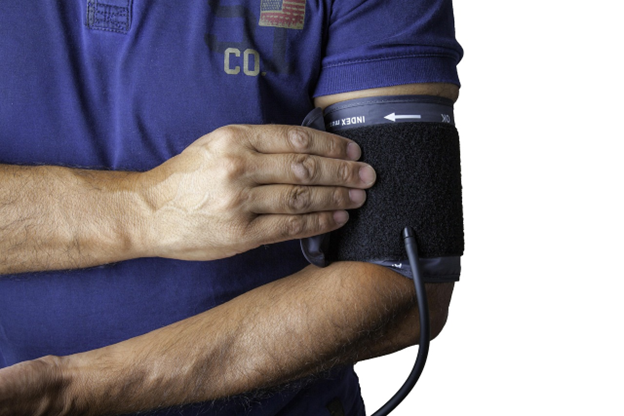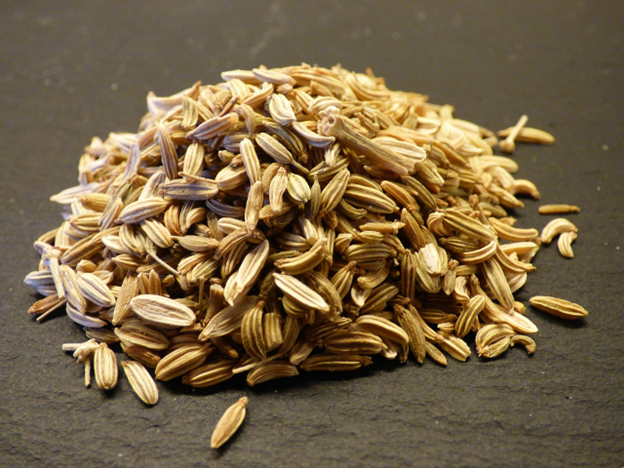AI wearables for blood pressure management help track heart health. These devices use artificial intelligence to check blood pressure all day. They give simple insights to help people stay healthy. If blood pressure goes up, the device warns early. This helps people take action before problems get worse. Wearables support better heart care by spotting risks fast. They help users make smart choices about health and daily habits. AI-powered alerts guide people in controlling their blood pressure easily. These devices make heart health simple and safe for everyone.
The Emerging Role of AI in Heart Health
Artificial intelligence for hypertension management is reshaping how we track and control blood pressure. AI-powered devices offer real-time monitoring, personalised insights, and predictive alerts that help users take timely action to prevent complications. It offers a glimpse into a future where healthcare is more proactive. Here’s a closer look at its transformative impact:
- Tailored Health Monitoring: AI collects and analyses data from wearables like smartwatches to track heart rate and blood pressure. Similar to the Oximeter, AI wearable can read blood pressure. It also recognises patterns unique to each user and offers personalised recommendations. This approach helps in early intervention and better disease control.
- Instant Alerts for Sudden Spikes: AI enables real-time tracking, ensuring that sudden blood pressure changes do not go unnoticed. If a spike occurs, users receive immediate notifications, allowing them to take preventive steps. In severe cases, alerts can prompt medical attention. Understanding the risks of extreme blood pressure fluctuations is essential.
- Accurate Predictions and Proactive Care: AI enhances the accuracy of health monitoring devices. Analysing lifestyle patterns, stress levels, and past readings provide customised guidance for better BP control.
The Mechanism Behind AI-Powered Alerts
Artificial Intelligence (AI) is making blood pressure management smarter and more efficient. Wearable devices equipped with AI continuously track health data, helping users prevent blood pressure spikes before they become serious. Here’s how AI-driven alerts work:
- Continuous Data Collection: Smart wearables use sensors like photoplethysmography (PPG) to monitor heart rate, blood flow, and blood pressure changes. This real-time data helps detect early signs of hypertension, reducing the risk of organ damage caused by hypertension.
- Pattern Recognition and Risk Detection: AI analyses collected data to identify irregularities. If a sudden spike occurs, the system flags it for immediate attention. Morning hypertension is common but often overlooked causing high risk. This too can be detected early with the help of AI-powered monitoring.
- Instant Alerts for Quick Action: If AI detects a potential spike, it immediately notifies users and healthcare providers. Timely intervention helps reduce the risk of complications like heart attacks and strokes.
- Personalised Health Recommendations: AI adapts to individual health patterns, offering tailored advice on lifestyle changes or medication adjustments for better BP control.
Benefits of AI-powered BP prediction
Artificial intelligence is changing how people manage high blood pressure. AI-powered wearables track blood pressure, give alerts, and provide helpful insights.
- Early Detection of Health Risks: AI finds small blood pressure changes before they become big problems. Even ScienceDirect has stated that AI can spot heart risks for better care.
- Custom Blood Pressure Tips: AI studies a person’s sleep, stress, and daily habits to give helpful advice. It tracks health trends and suggests changes to keep blood pressure stable. This makes managing hypertension easier and more effective.
- Real-Time Monitoring and Alerts: Smartwatch alerts for blood pressure notify users when readings become abnormal. AI-powered technology is also enabling contactless BP detection, making monitoring more convenient.
- Tracking Blood Pressure All Day: AI devices check blood pressure all the time. This helps people with high blood pressure avoid sudden spikes and stay safe. Long-term tracking reduces the risk of emergencies.
- Easier Health Monitoring: AI wearables let people check blood pressure at home. This helps those who can’t visit doctors often. It is useful for people in remote areas or with mobility issues.
- Better Health and Safety: AI gives early warnings so users can act fast. This may help prevent strokes, heart attacks, and serious health problems.
Challenges and Ethical Concerns in AI Blood Pressure Management
Artificial intelligence in blood pressure management presents unique challenges and ethical considerations:
- Keeping Data Safe: AI collects health data. It must stay private so no one misuses it. Strong security keeps it safe.
- Getting the Right Numbers: AI must give correct blood pressure readings. Wrong numbers can lead to bad health choices.
- Helping Doctors, Not Replacing Them: AI should work with doctors, not take their jobs. It must follow strict rules to be safe.
- Fair for Everyone: AI must work the same for all people. It should not give better results to some and worse to others.
- Using AI the Right Way: AI should make healthcare better, not harder. It must be tested often to make sure it works well.
Conclusion
AI-powered wearables help people check blood pressure in a smart way. Predictive blood pressure monitoring finds problems early and gives quick alerts. This helps people stay safe and avoid health risks.
These devices track patterns and tell users when blood pressure changes. AI makes health tracking easy and more accurate. People can take action before problems get worse. As AI improves, these tools will help even more. They give better care and keep people healthy. AI-powered tracking is a big step for better heart health.
Disclaimer
The information contained in this article is to educate, spread awareness in relation to hypertension and other diseases to the public at large. The contents of this article are created and developed by BPinControl.in through its authors, which has necessary, authorisations, license, approvals, permits etc to allow usage of this articles on The Website. The views and opinions expressed in this article are views, opinions of the respective authors and are independently endorsed by doctors. Although great care has been taken in compiling and checking the information in this article, The Website shall not be responsible, or in any way liable for any errors, omissions or inaccuracies in this article whether arising from negligence or otherwise, or for any consequences arising therefrom. The content of this article is not a substitute for any medical advice. The Website shall not be held responsible or liable for any consequence arising out of reliance on the information provided in the article.




